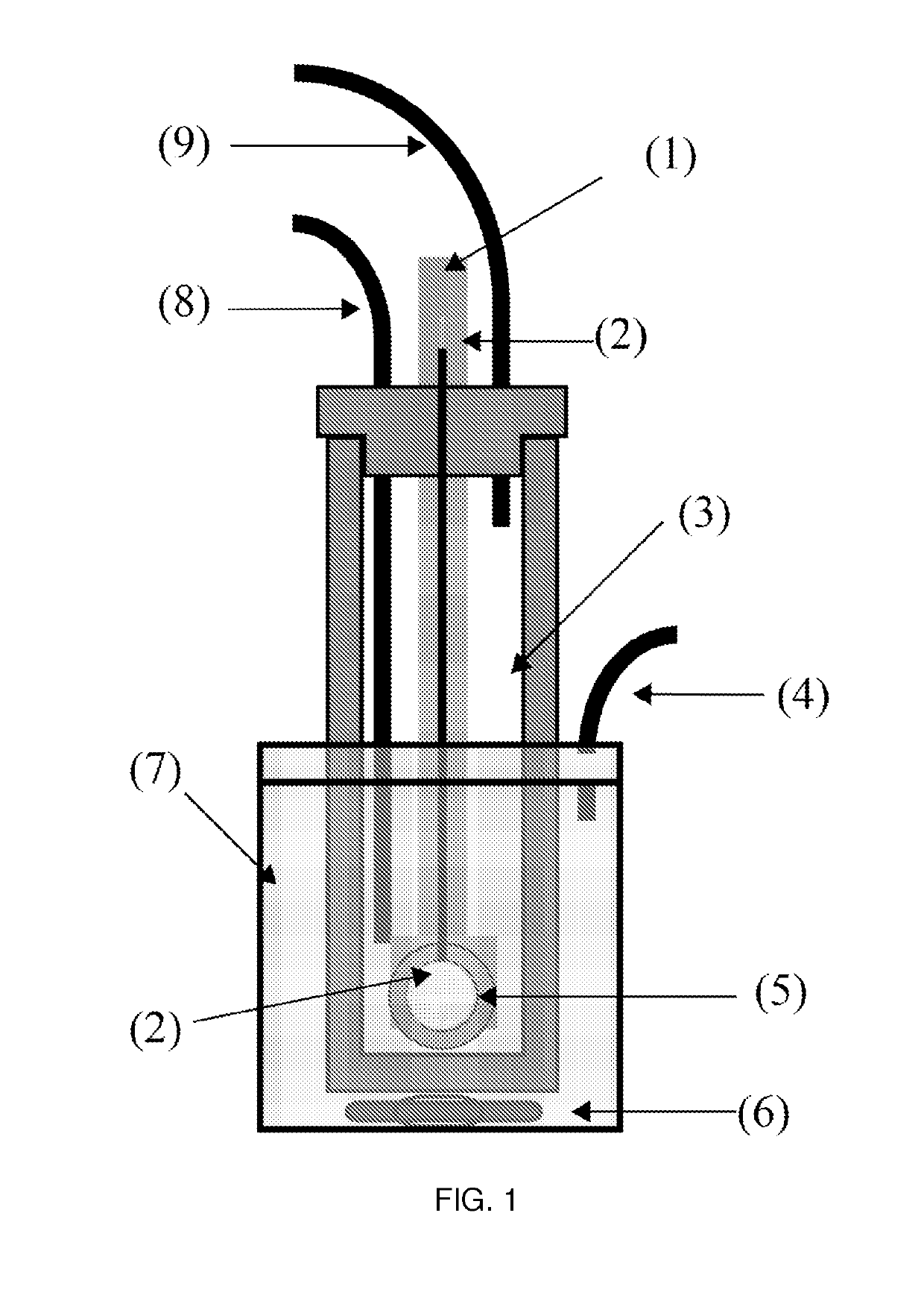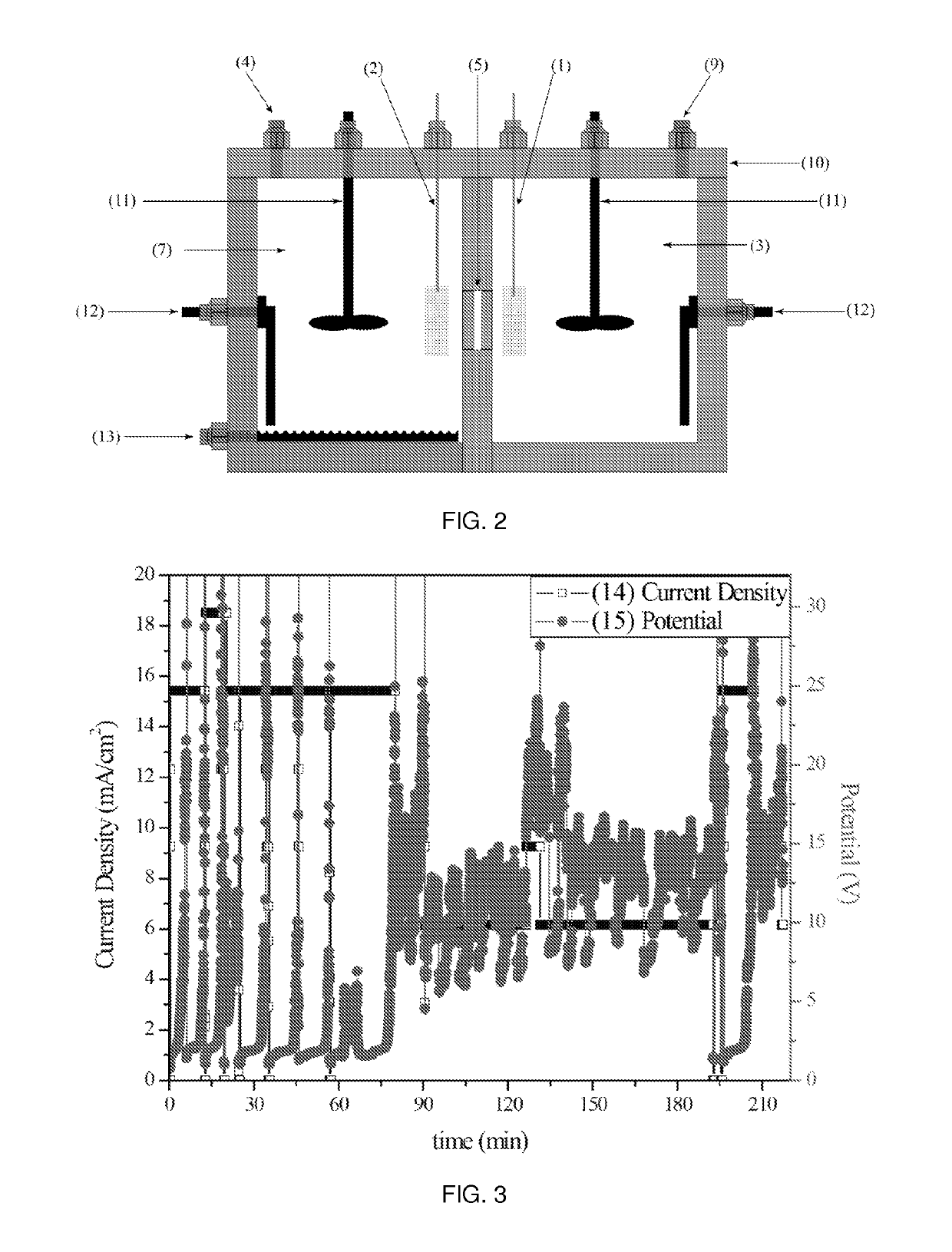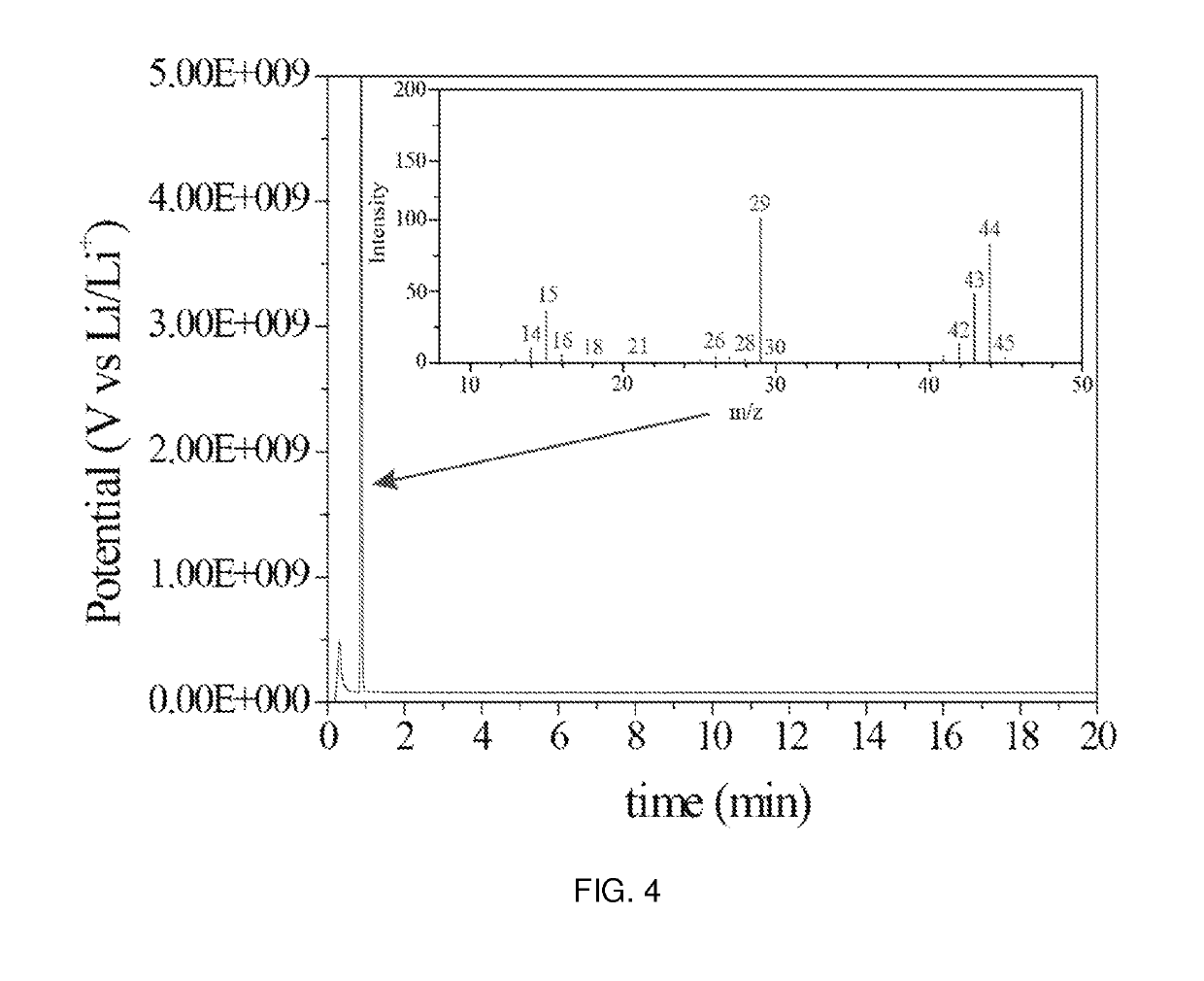Molten carboxylate electrolytes for electrochemical decarboxylation processes
a technology of electrochemical decarboxylation and molten carboxylate, which is applied in the direction of electrolytic organic oxidation, electrolysis components, cells, etc., can solve the problems of limited solubility of carboxylic acids, limited conductivity, and limitations of polar organic solvents' concurrent use as electrolytes, and achieves a lower melting point
- Summary
- Abstract
- Description
- Claims
- Application Information
AI Technical Summary
Benefits of technology
Problems solved by technology
Method used
Image
Examples
example 1
[0066]The molten salt electrolyte disclosed was used in an electrochemical decarboxylation process to convert the sodium salt of a carboxylic acid with a hydroxyl group into an aldehyde. The aldehyde produced can be used as an intermediate to the production of other chemicals. The molten salt electrolyte was comprised solely of the sodium salt of the carboxylic acid desired for the decarboxylation. An aqueous solution containing 10% by weight sodium hydroxide was used as the catholyte (3) and the temperature was maintained between 80 and 100° C.
[0067]The molten sodium salt anolyte was prepared by evaporating the water off of an aqueous syrup of sodium lactate (Sigma, 60% DL) using slight vacuum and mild heat. The sodium lactate was then heated to and held at 150° C. for 48 h. The temperature of the sodium lactate was then heated to 160° C. and the cathode compartment (3) was inserted into the melted salt anolyte (7). The aqueous catholyte was heated on a stir plate to 95° C. and the...
example 2
[0069]The molten salt electrolyte with a different cation but the same anion used in Example 1 can be used in an electrochemical decarboxylation process to perform the decarboxylation of the lactate anion. This example demonstrates how changing the cation of the molten salt electrolyte can lower the melting point of the molten salt and provide a low potential reduction reaction at the anode. The molten salt electrolyte can be comprised solely of the ammonium salt of the carboxylic acid being processed by the decarboxylation process in a single compartment cell.
[0070]The molten sodium salt anolyte is prepared by evaporating the water off of an aqueous solution of ammonium lactate (Sigma, 60% DL) using slight vacuum and mild heat. The ammonium lactate is then heated to and maintained at temperature between 50 and 100° C. for the experiment. The cell is operated until enough charge passes to theoretically convert 10% of the sodium carboxylate in the electrolyte. A current density betwe...
example 3
[0072]The molten salt electrolyte disclosed can be used in an electrochemical decarboxylation process to convert the sodium salts of long chain carboxylic acids into long chain saturated hydrocarbons. The saturated hydrocarbons produced can be further processed into either base lubricant or transportation fuel. The molten salt electrolyte can be comprised of a mixture of sodium salts of carboxylic acids which mimic the feed stream of carboxylic acids obtain from biological sources. In this example the cell is run at temperatures above the boiling of aqueous sodium hydroxide, so a solution containing 10% by weight sodium hydroxide in ethyl glycol can be used as the catholyte.
[0073]The molten sodium salt anolyte can be prepared by mixing lauric, myristic, palmitic and stearic acid in methanol and then following standard saponification procedure, adding sodium hydroxide to the solution to crash out the sodium salts. Following the addition of the sodium hydroxide the methanol is removed...
PUM
| Property | Measurement | Unit |
|---|---|---|
| temperatures | aaaaa | aaaaa |
| melting point | aaaaa | aaaaa |
| melting point | aaaaa | aaaaa |
Abstract
Description
Claims
Application Information
 Login to View More
Login to View More - R&D
- Intellectual Property
- Life Sciences
- Materials
- Tech Scout
- Unparalleled Data Quality
- Higher Quality Content
- 60% Fewer Hallucinations
Browse by: Latest US Patents, China's latest patents, Technical Efficacy Thesaurus, Application Domain, Technology Topic, Popular Technical Reports.
© 2025 PatSnap. All rights reserved.Legal|Privacy policy|Modern Slavery Act Transparency Statement|Sitemap|About US| Contact US: help@patsnap.com



